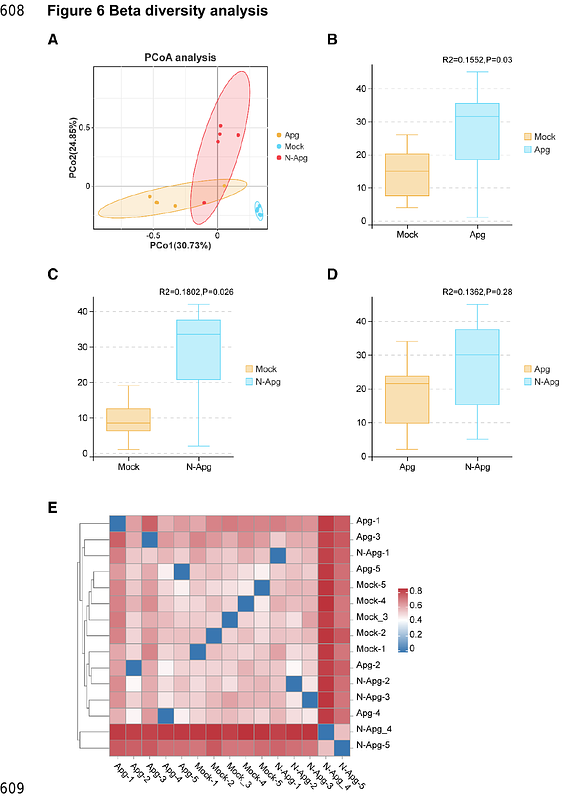A detailed analysis of 16S rRNA gene sequencing and conventional PCR-based testing for the diagnosis of bacterial pathogens and discovery of novel bacteria

A detailed analysis of 16S rRNA gene sequencing and conventional PCR-based testing for the diagnosis of bacterial pathogens and discovery of novel bacteria
Li, M.-N.; Wang, T.; Wang, N.; Han, Q.; You, X.-M.; Zhang, S.; Zhang, C.-C.; Shi, Y.-Q.; Qiao, P.-Z.; Man, C.-L.; Feng, T.; Li, Y.-Y.; Zhu, Z.; Quan, K.-J.; Xu, T.-L.; Zhang, G. F.
AbstractThis study represents the first analysis of the bacterial community in chickens affected by swollen head syndrome, utilizing 16S rRNA gene sequencing. Samples were obtained from clinical laying chickens and were examined for the presence of Avibacterium paragallinarum (APG) and Ornithobacterium rhinotracheale (ORT) using conventional polymerase chain reaction (PCR). From the samples, five APG-positive (APG) and APG-negative (N-APG) samples were chosen, along with five specific pathogen-free chickens, for 16S rRNA gene sequencing. Results showed that APG and ORT were widely detected in the chicken samples with swollen head syndrome (SHS, 9/10), while APG was detected in all five specific pathogen-free (SPF) samples. In contrast, conventional PCR sensitivity was found to be inadequate for diagnosis, with only 35.7% (5/14) and 11.1% (1/9) sensitivity for APG and ORT, respectively, based on 16S rRNA gene sequencing data. Furthermore, 16S rRNA gene sequencing was able to quantify the bacteria in the samples, revealing that the relative abundance of APG in the APG group ranged from 2.7% to 81.3%, while the relative abundance of APG in the N-APG group ranged from 0.1% to 21.0%. Notably, a low level of APG was also detected in all 5 SPF samples. The study also identified a significant number of animal and human common bacterial pathogens, including but not limited to Gallibacterium anatis, Riemerella columbina, Enterococcus cecorum, Mycoplasma synoviae, Helicobacter hepaticus, and Staphylococcus lentus. In conclusion, 16S rRNA gene sequencing is a valuable tool for bacterial pathogen diagnosis and the discovery of novel bacterial pathogens, while conventional PCR is not reliable for diagnosis.


